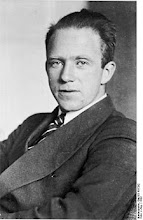At right around one PM, eight-five years ago today, a rotating funnel of air and water vapor dropped from a wall cloud near Ellington, Missouri and set off on a tri-state odyssey of destruction unprecedented in recorded human history. When the storm had run its course 219 miles later, almost seven-hundred people were dead, 2000 more were injured, many seriously mangled, and 15,000 homes were destroyed. Whole towns simply disappeared beneath the 5000 foot wide roaring cyclone, emerging horrifying moments later as scenes of carnage and chaotic piles of rubble. Some never fully recovered from the devastation wrought, even decades later. This tornado was so bad, Dorothy Gale would have kissed Toto’s ass goodbye and headed for the cellar alone.
America in March of 1925 was a nation of almost 110 million citizens earning an average of about $1,300 a year. The economic collapse and Great Depression were still years away and the Twenties roared on with unemployment hovering around a structural five-percent, about the same as the illiteracy rate. Calvin Coolidge had just been elected President in his own right and sworn in, having initially assumed the Presidency when Warren Harding died from bad oysters and a weak heart in August of 1923. Coolidge crushed his Democratic opponent, John W. Davis, a one-term representative from West Virginia, who was nominated at the Democratic Convention in New York on the 103rd ballot. Ty Cobb was getting ready to smash a few more Major League records and Jack Lemon, Hal Holbrook, George Kennedy, Robert Altman and Sam Peckinpah had all been born in the preceding four weeks.
March 18 dawned as a pretty normal day in the Midwest, cloudy and cool with a forecast for rain and even cooler temperatures. A cold front was on its way through the nation’s heartland, nothing unusual for the last few days before spring. Unfortunately, at the same time a high pressure system was moving north from the Gulf of Mexico pushing warm, moist air into the path of the cool air moving south. Sometime after noon, they slammed into each other somewhere around Southeastern Missouri. The warm air rose rapidly over the cooler air and as the rising columns of air hit the chilly upper level winds, they dropped their cargo of moisture and began to plunge downward. Roiling, dark clouds formed, hanging low to the ground, and as the falling air was torn between the two opposing fronts, it began to spin. Pushed along the frontal boundary by the Polar Jet Stream, the tornado took off at speeds approaching 70 miles an hour and raced towards Illinois.
In 1925 there was no Doppler radar, no 24-hour weather channel, and no warning. The storm moved so rapidly, and the devastation was so complete, there wasn’t even a chance for anyone to phone the next town over to tell them hell was out their way. The cyclone, with wind speeds approaching 300 miles per hour, overran Annapolis, Missouri destroying 90 percent of all the structures and killing four. Next was Gorham, Illinois, which was completely flattened with a loss of 37 lives. The storm then set its sights on Murphysboro, Illinois, a town of 12,000 souls. It collapsed an elementary school full of children and disintegrated forty percent of the town’s structures leaving 243 people dead. At this point, the storm was so wide that those who saw it coming couldn’t recognize it as a tornado. They stood, mouths agape, as the black wall of death descended upon them.
Next hit was Frankfort, Illinois, a mining town where most of the men were underground mining coal, and were thus perhaps the most unfortunate of all, because while they sat safely in the darkness resulting from the power outage, their wives and children were being shredded by an angry behemoth, and 127 of them died. The storm then roared into Indiana and completely erased the town of Griffin from the face of the Earth, killing 25. Its last stop was the town of Princeton Indiana, which it struck a glancing blow, only flattening twenty-five percent of the town, killing 45 people in the process. It wandered on for a few miles more before evaporating like the morning dew at exactly 4:30 PM. No tornado before or since has traveled farther, stayed on the ground longer or killed more people. If the storm had struck a more populous area, the death toll could have been astronomical. As it was, thousands of stunned survivors were left to dig through the debris that remained of their lives and mourn their beloved dead.
These days we have all sorts of technology to identify forming storms and warn those in their paths. We have satellites and planes and radar and disaster-safe communications. We have better buildings and better trauma care and cranes and rescue dogs and legions of brave first responders. We also have a greater disconnection from the arbitrary and capricious nature of life and a greater expectation that we will all die in our sleep after a long healthy life filled with accomplishment and success, but other than being fatter, better educated, more heavily medicated and slightly less racist, we are not much different from the citizens of 1925 Griffin, Indiana who saw their whole world snatched into the heavens by the very wrathful god they had beseeched for mercy at Sunday services just three days earlier. They were completely at the mercy of chance, and despite 85 years of stunning progress, so are we
Thursday, March 18, 2010
Subscribe to:
Post Comments (Atom)









No comments:
Post a Comment